Not all baths are created equal. Among Japan’s many wonderful “onsen” hot springs, some are distinguished by their histories or the unique properties of their mineral waters. At others, the setting is just as much of a draw. Join us on a tour of some of the country’s most spectacular rotenburo (outdoor baths), where you can take in sweeping views while enjoying an al fresco dip.

A bather basks in the outdoor baths at Toshichi Onsen Saiunso in Iwate.
Photo credit: Toshichi Onsen Saiunso
The art of onsen hot-spring bathing
Japan is blessed with an abundance of hot springs, and bathing in their waters has been an integral part of the country’s culture for centuries. There are more than 27,000 such springs nationwide, ranging from popular spa resorts to remote mountain locations.
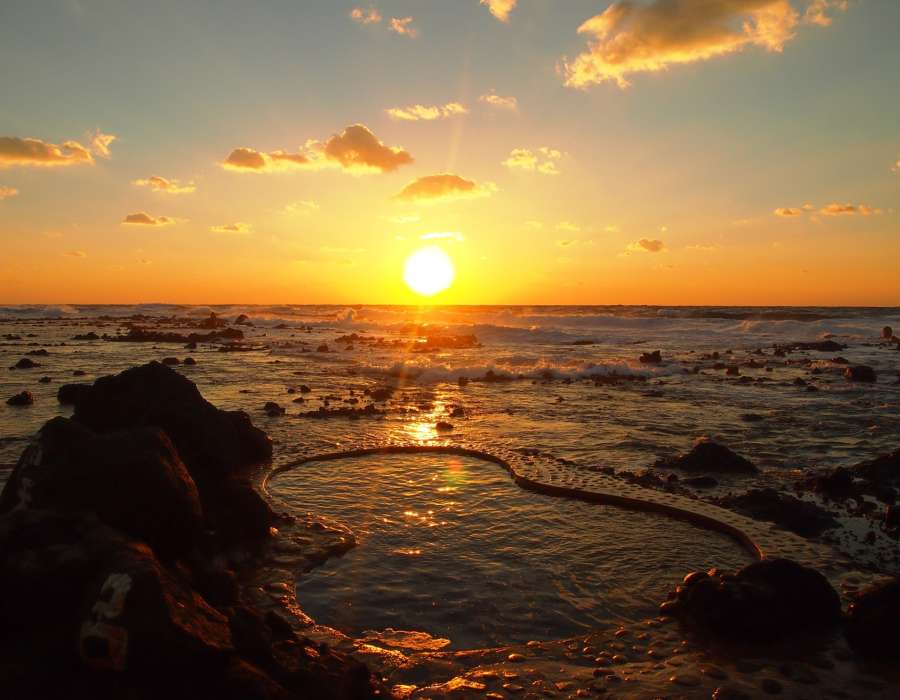
The rotenburo at Aomori’s Furofushi Onsen sits right on the Sea of Japan.
Photo credit: Koganezaki Furofushi Onsen
If you haven’t been to a public bath in Japan, be aware that there are certain rules you need to follow, such as washing before you get into the tub. Also note that many onsen prohibit tattooed guests, though this is starting to change.
Remember that photography is typically forbidden—so no matter how amazing the view, please don’t bring any cameras into the bathing area.
And if you’re worried about whether communal bathing is safe at the moment, rest assured that onsen are taking extensive precautions to protect against Covid-19.
Baths for enjoying mountain landscapes
The petite rotenburo at Takamine Onsen in Nagano gives you a bird’s-eye view over the mountain valley from an elevation of 2,000 meters, meaning that you’re often above the cloud line. Bathing here can make you feel like you’re on top of the world.
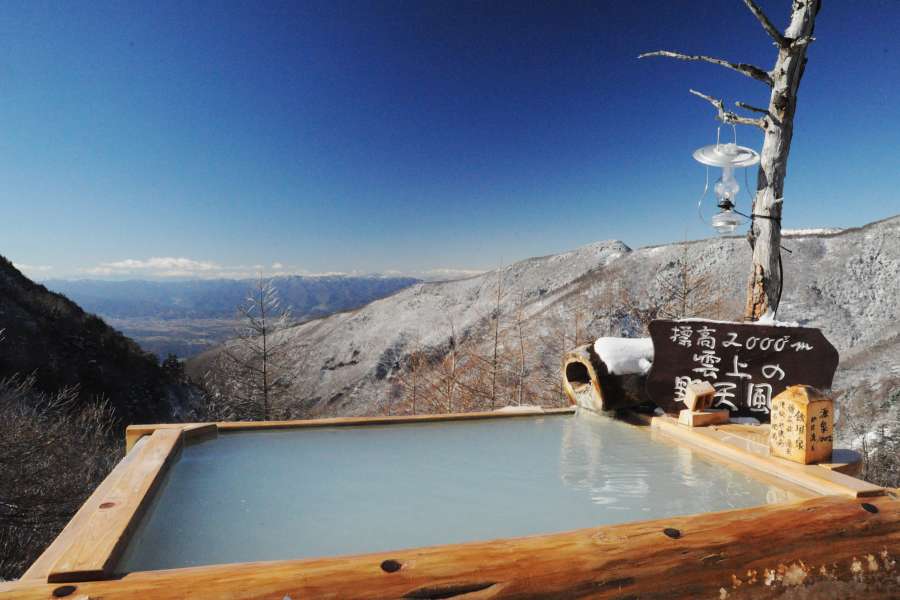
Take a dip 2,000 meters above sea level at Takamine Onsen in Nagano.
Photo credit: Takamine Onsen
If you’re looking for an adventure, try the remote Ubayu Onsen Masugataya in Yamagata, where the outdoor baths are hemmed in by imposing cliffs that look like something out of an ancient scroll painting. It’s only accessible for six months of the year, but that hasn’t stopped people coming here for over four centuries.
Toshichi Onsen Saiunso, 1,400 meters above sea level on the slopes of Mt. Hachimantai in Iwate, is another destination that will appeal to intrepid bathers. The open-air baths are fully exposed to the elements, making for a dramatic experience—though it’s not for the self-conscious.
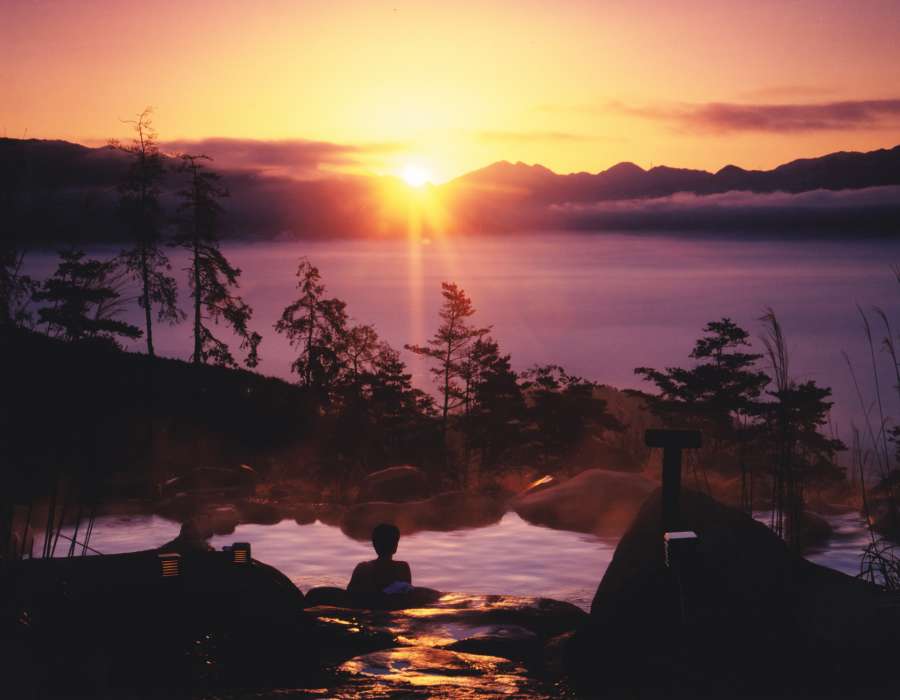
Early-bird bathers watch the sunrise from the rotenburo at Hottarakashi Onsen.
Photo credit: Hottarakashi Onsen
Hottarakashi Onsen in Yamanashi opens an hour before dawn each day, allowing bathers to watch the sun rise over the Kofu Plain. The panoramic views are impressive at any time of day (and night), and you can often see the peak of Mt. Fuji in the distance.
Baths for soaking up ocean and river views
You aren’t quite bathing in the sea at Furofushi Onsen, on the rugged coast of Aomori, but it may feel that way at this majestically appointed rotenburo. As if being able to see the sun set over the Sea of Japan wasn’t enough, the onsen is also known for its distinctive, iron-rich waters.
Ginpaso in Hyogo offers a more tranquil experience, with infinity-pool style baths that look out over—and seem to blend into—the Seto Inland Sea. On clear days, you can see as far as Shikoku.
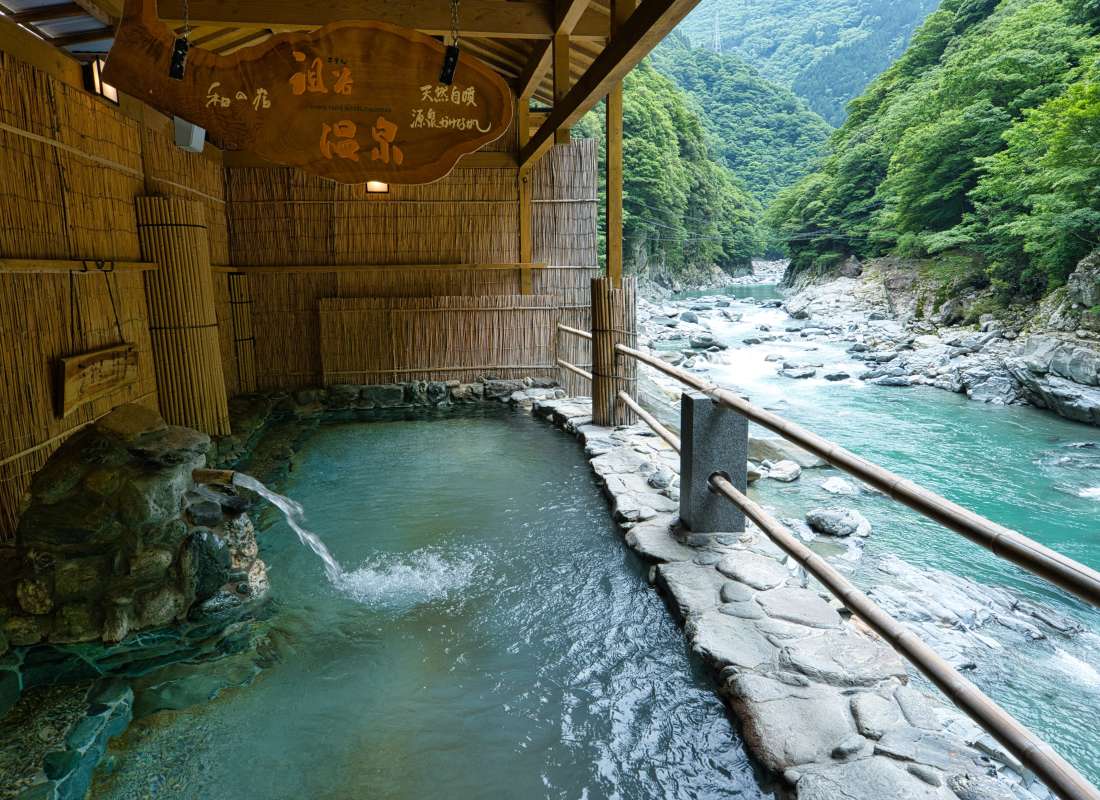
Savor the valley setting of Iya Onsen’s riverside rotenburo in Tokushima.
Photo credit: Iya Onsen
If rivers are more your thing, few locations are as striking as Iya Onsen, the only hotel in the secluded Iya Valley in Tokushima. A cable car takes guests down to a pair of open-air baths that jut out over the river, giving a prime position to survey the beautiful natural surroundings.
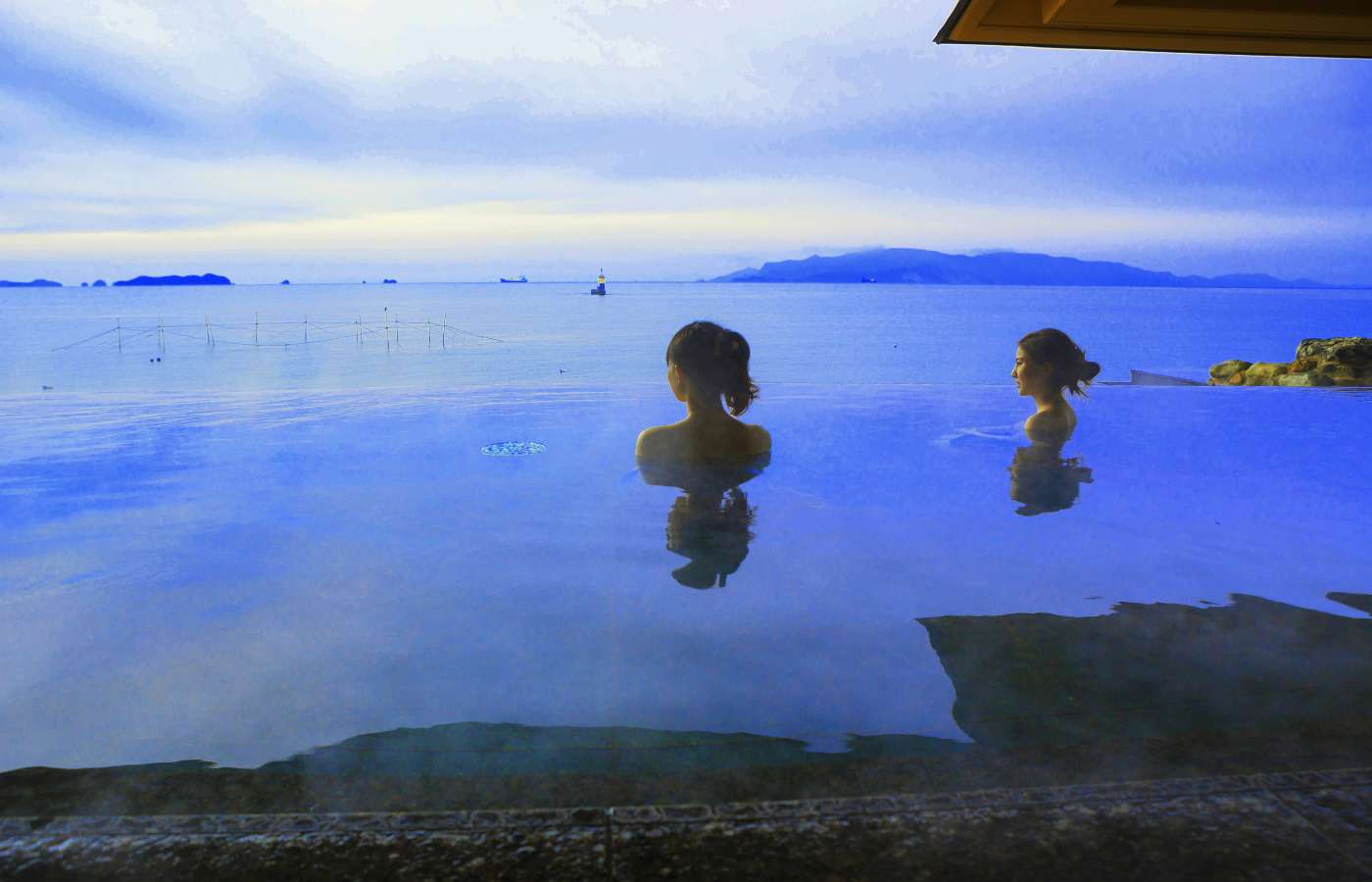
Soaking up the serene sea view at Ginpaso in Hyogo.
Photo credit: Ginpaso
These are just a few of the scenic rotenburo that await on your next trip to Japan. When it comes to picture-perfect bathing experiences, you’ll be spoiled for choice.
-
About the author
Author: James Hadfield
Profile: Originally from the UK, James Hadfield has been living in Japan for nearly 20 years and still hasn’t got bored. He writes about lifestyle and culture for publications including The Japan Times and ele-king.





















































